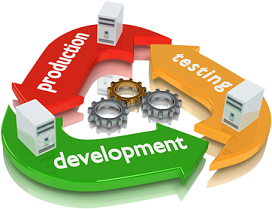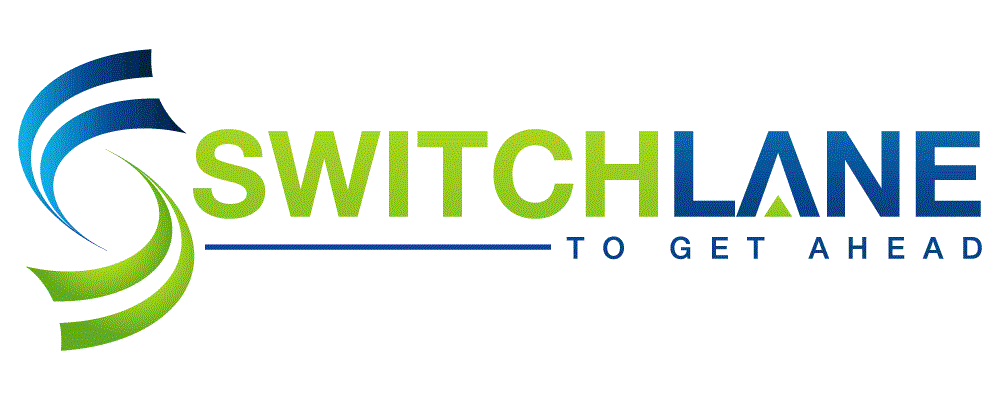Web development is a broad term that can mean different things to different people. In its simplest form, a web site or application is one that is used through a browser such as
Google Chrome, Microsoft Internet Explorer, Mozilla Firefox, Apple Safari, etc. A web application may be exposed to the public internet or be confined to a private intranet. The
content and functionality it provides could be very simple or highly complex. The possibilities are nearly endless.
Unfortunately, the technologies used to build web applications are almost just as endless. Initially learning these technologies and then keeping pace with them as they evolve can
be a daunting task, especially for companies that don't specialize in technology. However, just about any company these days needs to at least have a public internet site if they
want to remain competitive and relevant. That's where SwitchLane comes in. We can build a web application for you using most of today's modern technologies and by doing so we
take the complexity out of your hands.
Software used to be simpler to develop when it only ran on traditional computers such as desktops, laptops and servers. Nowadays, mobile devices including smartphones and tablets
nearly outnumber traditional computers. The software that we use on these devices is generally divided into "mobile web" and "native apps" categories. Mobile web software is nothing
more than a web application that has been adapted to work well in a mobile browser on a much smaller screen. Initially, companies had to build and maintain separate versions of their
web applications to run on traditional computers versus mobile devices. This approach has now been replaced with the use of "responsive design" where a web page can dynamically
rearrange and/or resize its content for different screen sizes. For example, this website is responsive.
Native apps are a completely different approach to mobile software. These apps are built using technologies specific to each mobile operating system such as iOS (Apple), Android
(Google) and Windows Phone (Microsoft). The major advantage of native apps is that they are able to take advantage of much deeper device capabilities than a mobile web application
can. For example, a native app can access and interact with your phone's GPS system, accelerometer, digital compass, etc whereas a mobile web application cannot. However, the
major disadvantage of native apps is that you have to build separate ones for each operating system if you want to provide support for a wide range of devices. SwitchLane's team
has experience developing native apps on each of today's major mobile operating systems.
Databases of one type or another typically underlie most software applications. In addition, database technologies themselves form the primary foundation of certain types of systems
such as data marts, data warehouses and OLAP cubes. In the modern world, companies have to deal with an ever-increasing amount of data being generated by a wide range of systems
and devices. The ability to collect and store this data but also analyze it to make informed business decisions is more important than ever to be competitive and to be able to
react quickly to changing market conditions. The term "Big Data" has been coined to describe this phenomenon even though "big" is a relative term. Data scientists often break down
the challeges of dealing with such data into four V's: 1) Volume - The sheer amount of data being stored and analyzed. 2) Velocity - The rate at which new data is collected and at
which the volume is growing. 3) Variety - The number of different types and forms of data being collected. 4) Veracity - The accuracy or uncertainty of the data.
For many years, relational database platforms dominated the market and in large part followed a slow technology evolution when compared with other parts of the IT world. In the
early 21st century another form of database platform, commonly referred to as NoSQL, experienced a tremendous burst in popularity triggered by the needs of companies working
with larger amounts of data than the relational platforms could support at scale. In addition, a new generation of powerful reporting and data visualization tools have emerged as
well. Ever since, technology evolution in the database world has accelerated dramatically and keeping up with the evolution has become a challenge. SwitchLane and our extended
network of partners can help you to navigate the challenge and implement the right solution for your specific business needs.
Customer Relationship Management (CRM) systems are used to manage a company's interactions with their current and prospective customers. The functionality of a CRM system can range
from simple things such as keeping track of contact information and sales leads to sophisticated things such as deep data analytics to understand how to maximize the relationship with
a given customer across all communication channels. Companies across the size spectrum from small to very large can benefit from proper use of a CRM system to understand their
sales pipeline and to ensure timely follow up on open items with their customers.
Some companies can get all of the CRM functionality they need using an "out of the box" product, either as a SaaS solution or hosted within their infrastructure. However, it is
common to implement customizations and integrations to exchange data between your CRM system and other critical systems. SwitchLane and our extended network of partners has
experience with these matters and would be happy to help you evaluate your options.
 SwitchLane was founded by people with extensive application development backgrounds and building solutions for our clients has always been a core part of our business. We can take ownership of the
entire Software Development Life Cycle (SDLC) for you and handle everything from requirements definition through design, development, testing and deployment. If you don't need all of that, we're
also happy to supplement your team for only certain phases of the SDLC. While we prefer to use Agile processes when the choice is ours, we can adapt to your established processes as well when
integrating with your IT team.
SwitchLane was founded by people with extensive application development backgrounds and building solutions for our clients has always been a core part of our business. We can take ownership of the
entire Software Development Life Cycle (SDLC) for you and handle everything from requirements definition through design, development, testing and deployment. If you don't need all of that, we're
also happy to supplement your team for only certain phases of the SDLC. While we prefer to use Agile processes when the choice is ours, we can adapt to your established processes as well when
integrating with your IT team.









































